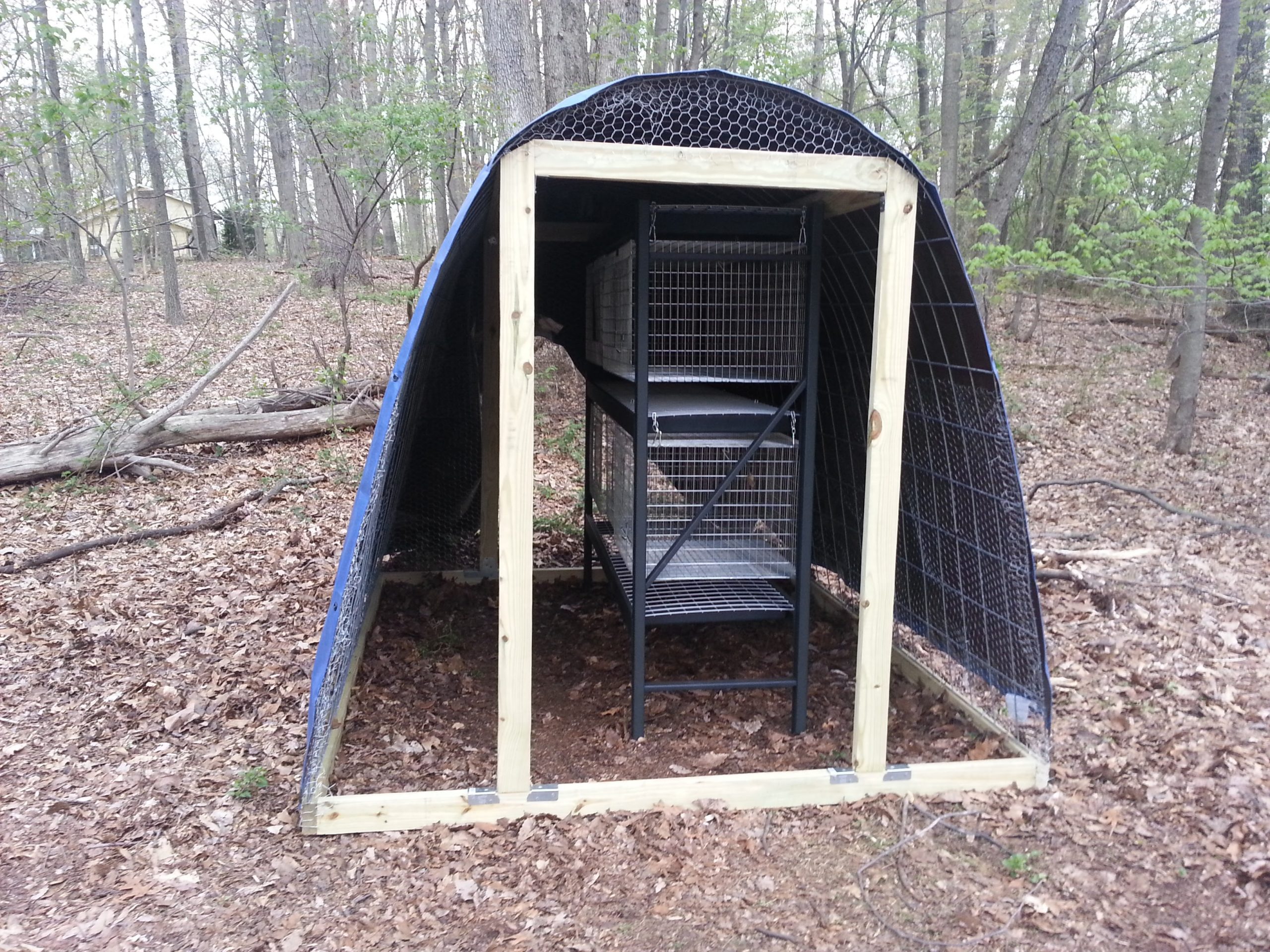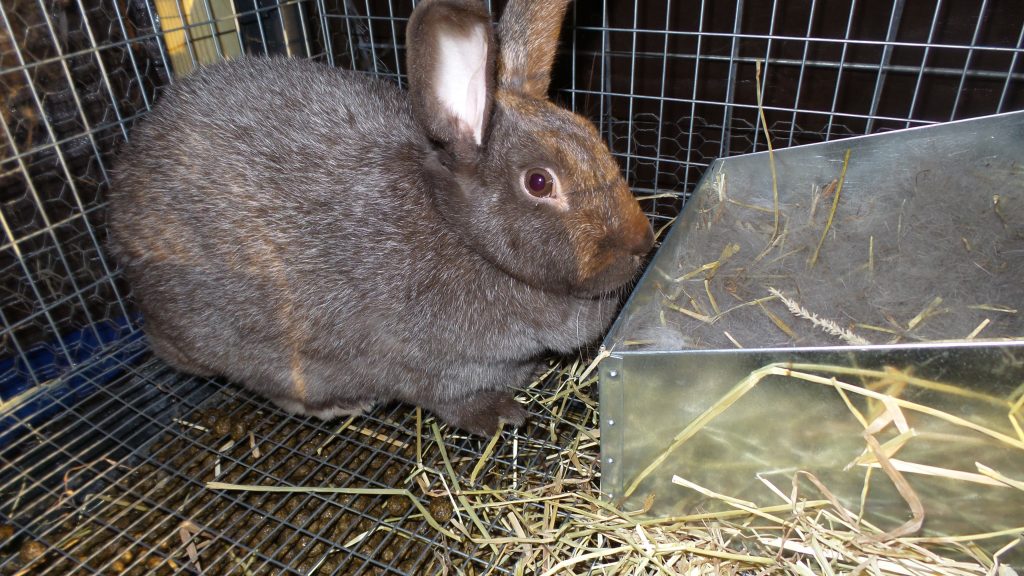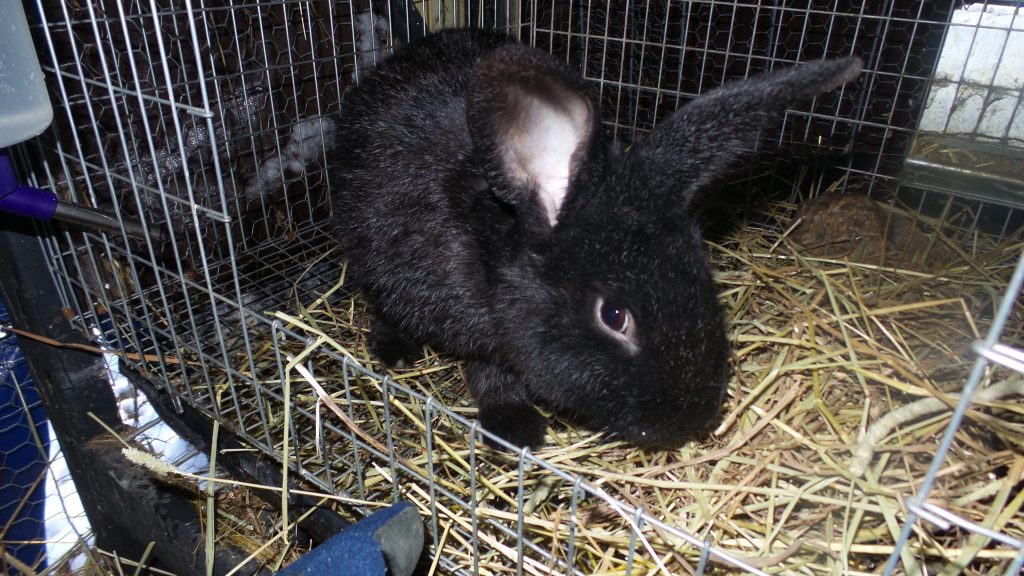
If I had to downsize to one farm animal, or go back to life on a quarter acre homestead, I’d choose rabbits. I’ll go into more detail below, but here’s the cliff notes version of why I’d choose rabbits.
Summary:
- rabbits multiply rapidly without human help or special equipment; they feed their young themselves
- rabbits can live on grass and weeds
- meat rabbits fatten in 9 weeks (as fast as commercial meat chickens)
- rabbits can be brought in and live in the house if circumstances warrant; and they can easily be litter box trained
- rabbits are portable
- rabbits manure is a balanced, nutrient dense fertilizer
- rabbits’ space requirements are tiny
- rabbits are quiet
- their fur can be spun (angora) or pelts made into a variety of warm gear
Our Experience
We have been raising Silver Fox rabbits here on our Mid Atlantic Homestead for the last 5 years. We arrived with chickens and within a few months created housing and purchased our Silver Fox Rabbits.
This is what our first little rabbitry looked like:

We started with 2 does (females) and 1 buck (male) of good quality stock (pedigreed show quality). I intended to grow out the kits (baby rabbits) and butcher them for our meat supply, but changed my approach as time went by (more on that below).
Here is our first doe, Alice in Wonderland, with her second litter of kits. She was a wonderful mother from the start.

Here are a few of the weaned kits from Alice’s first litter. She had a mixture of black and chocolate kits because our first buck was black.

Here is Deiter D. He was a fabulous buck. He loved to be petted and so it was hard to get a good picture of him.

Why we started raising rabbits

1. Manure for my gardens
My primary motivation for adding rabbits to our homestead was… poop! At our old house (1/3 acre) I bought rabbit manure regularly for 10 dollars a bucket. Rabbit manure is incredible! It is not “hot” and won’t burn plants when applied fresh. Rabbit manure is approximately 2 percent nitrogen, 1 percent phosphorus and 1 percent potassium. It is pelletized in an easy to spread form. Prior to adding any amendments our soil tests here on the Mid Atlantic Homestead showed an acidic pH of 5.3 and loads of missing nutrients. After 5 years and many wheelbarrow loads of rabbit manure, I can happily report that the tilth, pH, and macro nutrient levels are much improved. (I am amending the soil for micro nutrients and sulfur — more on that here).
2. Small space requirements
Most of our rabbits live in 24 by 24 inch wire cages. Breeding does and kits are in 36 by 30 inch cages. We carefully followed the rabbit housing guidance found in the Storey’s Guide to Raising Rabbits written by Bob Bennett. I highly recommend reading his book.
Rabbits need air circulation, but also cannot be out in the wind. If the ammonia in their urine builds up in their enclosure it will injure their respiratory system and make them more susceptible to infections.
Most rabbit hutches sold commercially are made of wood, which is terrible for rabbits! It makes me so sad to see those hutches. They chew on the wood. Their urine soaks into it and breeds bacteria. Wood is also very difficult to clean. Wire cages suspended in a wooden or wire enclosure is the healthiest and most economical option for housing rabbits.
3. We eat meat
We are not vegetarian. Rabbit meat is lean and high in protein, vitamins, and minerals. My children and I show rabbits and raise them as part of our local 4H program. We breed rabbits to improve the quality of the breed and culls (rabbits with poor traits) are a sad result of that breeding program. We let the culls grow up, humanely butcher, and gratefully eat their meat.

4. They are easy to breed and maintain
Rabbits multiply. They are a sustainable source of food and income for a small farm. Our rabbits average 6 kits per litter. They can raise as many as 6 litters per year, though we don’t push our does like that. Our does average 2-3 litters per year and retire after 8-10 litters. They could definitely do more, but I think treating them humanely is more important than making a profit.

5. Showing and selling high quality rabbits
I did not originally plan to raise show rabbits. On the advice of a fellow homesteader and longtime rabbit breeder, I started our herd with the best quality pedigreed rabbits that I could find. He said that good quality stock would be more likely to breed true, have large litters, and be healthy. He was right.
Breeding high quality rabbits allows us to sell our extra rabbits. We started going to rabbit shows occasionally to get formal judges opinions and suggestions on the quality of our stock. That led us to enrolling our older children in the 4H program. 4H is a wonderful program for teaching kids animal husbandry, management, organizational, and people skills. As stated above, part of showing rabbits is breeding them. We keep our favorites and sell those of good quality.
Rabbits give us so much. Breeding and showing rabbits is fun. We love watching their antics. Our best breeders become like pets. We even have a “Rabbit Retirement Home” for breeders too old to continue, but who we have earned their keep. As I see it, their manure reimburses me for most of their feed costs and sales of their offspring covered the rest.
I cannot recommend them highly enough!!




Leave a Reply